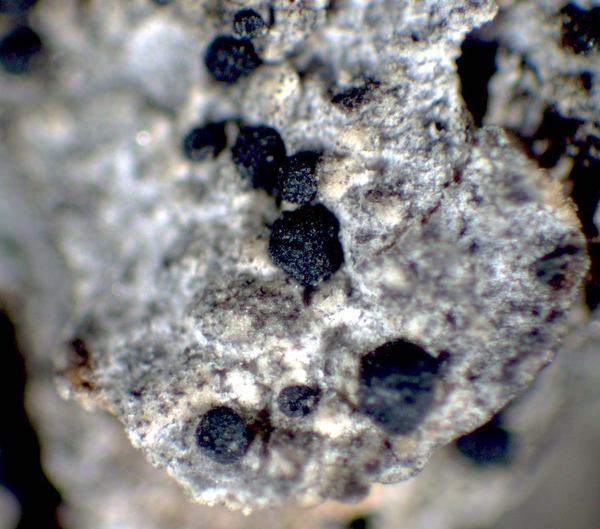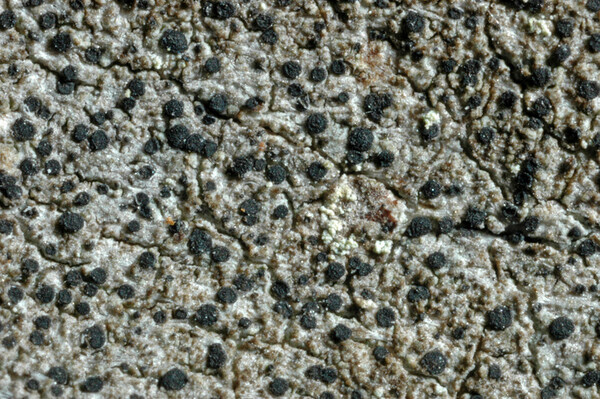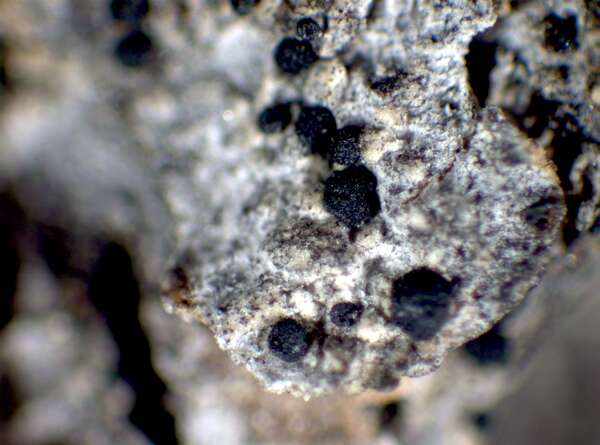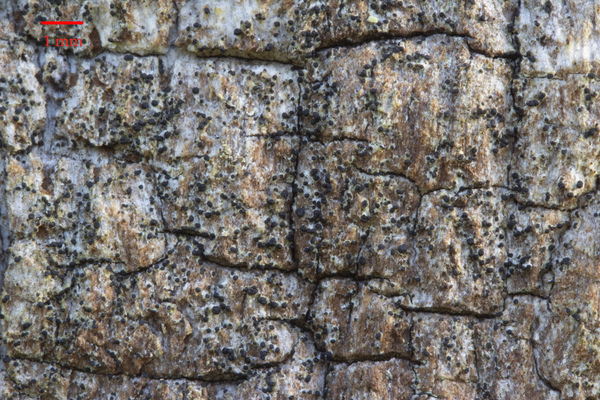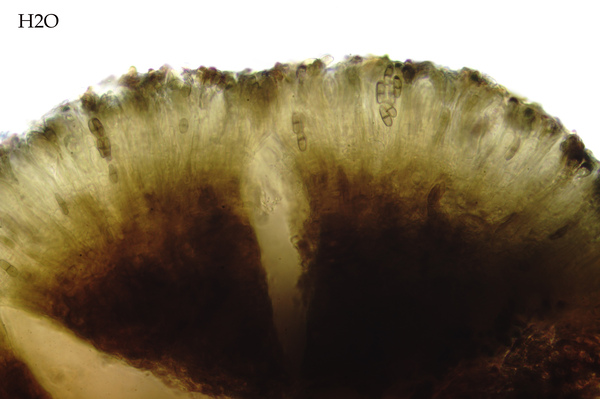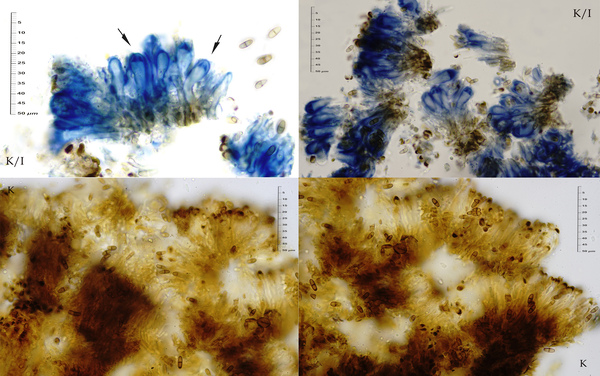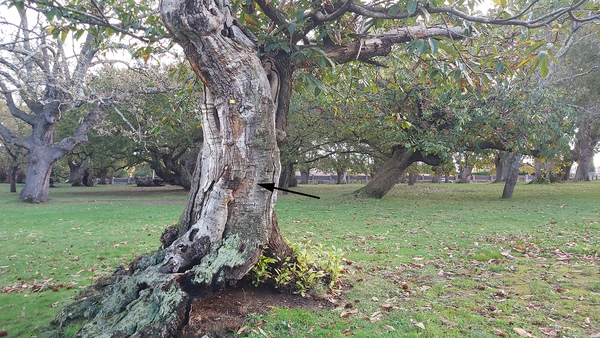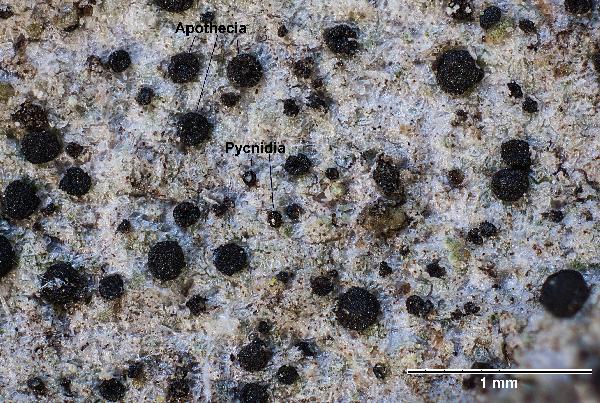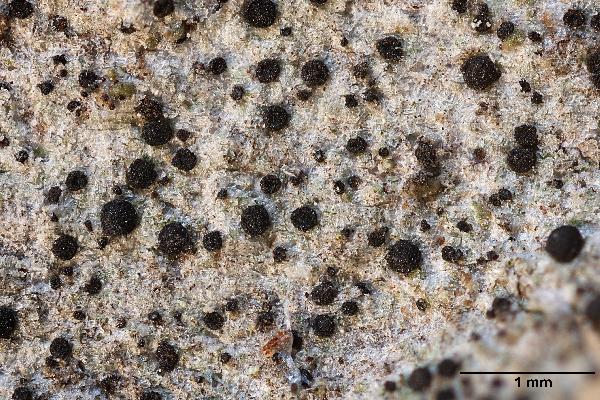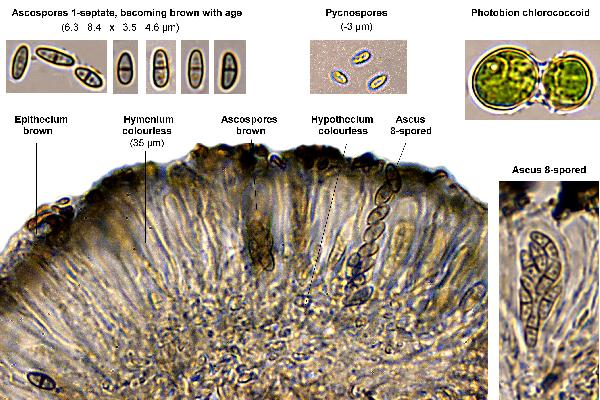Buellia schaereri De Not.
Giorn. Bot. Ital., 2: 199, 1846.
Synonyms: Buellia destructans (Tobler) R. Sant.; Buellia nigritula (Nyl.) Mudd; Karschia destructans Tobler; Lecidea nigritula Nyl.
Distribution: N - VG, Frl, Ven (Nascimbene & Caniglia 2000, 2003c, Nascimbene & al. 2006e, Nascimbene & Marini 2007), TAA (Nascimbene 2006b, 2006c, 2008b, 2013, 2014, Nascimbene & al. 2006, 2006e, 2007b, 2009, 2010, 2014, 2022, Stofer 2006, Nimis & al. 2015, Trindade & al. 2021), Lomb, Piem (Isocrono & al. 2004), Emil (Nimis & al. 1996, Fariselli & al. 2020), Lig (TSB 33052). C - Tosc (Putortì & Loppi 1999, Brunialti & Frati 2010, Brunialti & al. 2012b), Marc (Nimis & Tretiach 1999), Laz, Abr (Nimis & Tretiach 1999), Mol (Nimis & Tretiach 1999, Caporale & al. 2008). S - Camp (Aprile & al. 2002, 2003b, Nimis & Tretiach 2004, Garofalo & al. 2010), Cal (TSB 13945).
Description: Thallus crustose, often almost entirely hidden in the substrate, sometimes thinly episubstratic and rimose, appearing as a grey-white to olive-brown patch. Medulla poorly developed, I-. Apothecia lecideine (0.1-)0.2-0.3(-0.5) mm across, soon sessile, with a black, epruinose, at first flat then soon convex disc, and a thin, soon excluded proper margin. Proper exciple narrow, poorly differentiated, Aethalea-type, the inner hyphae hyaline, prosoplectenchymatous, the outer hyphae parallel and usually strongly brown-pigmented; epithecium brown, N-; hymenium colourless, 35-60 µm high, not inspersed with oil droplets; paraphyses simple to moderately branched, the apical cells swollen, with a brown cap; hypothecium dark reddish brown. Asci 8-spored, clavate to cylindrical-clavate, the apical dome K/I+ dark blue with a pale, conical-pointed apical cushion (axial mass), the wall I-, but the thin outer gel I+ blue, Bacidia-type. Ascospores 1-septate, soon brown, ellipsoid with obtuse ends, not constricted at septum, 6-10(-12) x 2.5-4(-4.5) µm, Buellia-type, thin-walled throughout, the wall not ornamented. Pycnidia often numerous, globose, unilocular. Conidia very short, oblong to ellipsoid, some of them almost globose, 1.5-3 x 0.5-1(-1.4) µm. Photobiont chlorococcoid. Spot tests: K-, C-, KC-, P-, UV-. Chemistry: without lichen substances.Note: a mainly cool-temperate to boreal-montane, circumpolar species found on acid bark, especially of conifers, and on wooden poles in upland areas, to be looked for further in the mountains of Southern Italy.
Growth form: Crustose
Substrata: bark and lignum
Photobiont: green algae other than Trentepohlia
Reproductive strategy: mainly sexual
Commonnes-rarity: (info)
Alpine belt: absent
Subalpine belt: rather common
Oromediterranean belt: absent
Montane belt: rather rare
Submediterranean belt: very rare
Padanian area: absent
Humid submediterranean belt: very rare
Humid mediterranean belt: absent
Dry mediterranean belt: absent
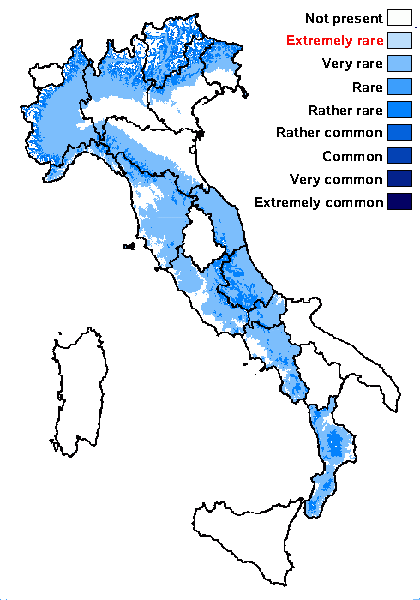
Predictive model
Herbarium samples
Growth form: Crustose
Substrata: bark and lignum
Photobiont: green algae other than Trentepohlia
Reproductive strategy: mainly sexual
Commonnes-rarity: (info)
Alpine belt: absent
Subalpine belt: rather common
Oromediterranean belt: absent
Montane belt: rather rare
Submediterranean belt: very rare
Padanian area: absent
Humid submediterranean belt: very rare
Humid mediterranean belt: absent
Dry mediterranean belt: absent

Predictive model
| Herbarium samples |
 INDEX FUNGORUM
INDEX FUNGORUM
 GBIF
GBIF
 DOLICHENS
DOLICHENS
